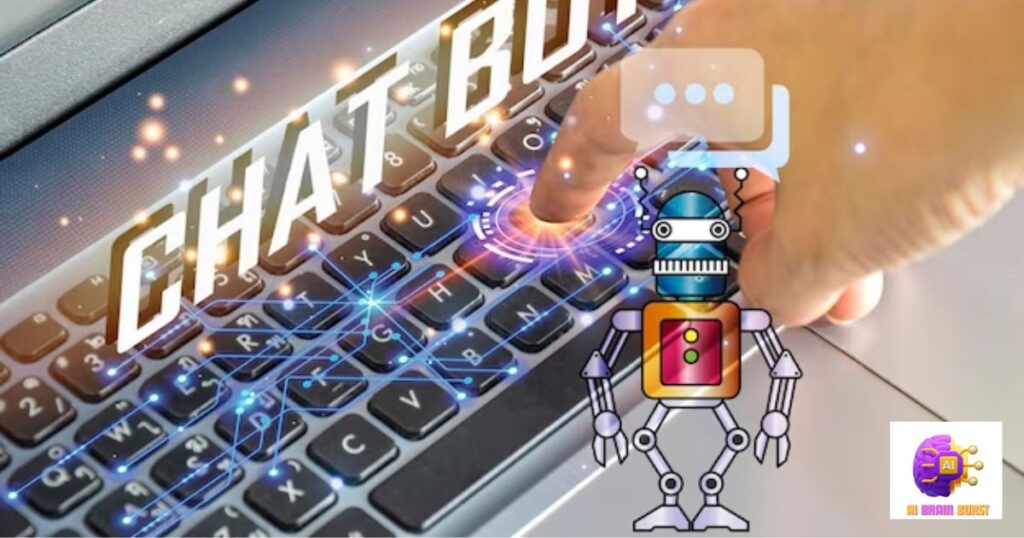In an era dominated by technological advancements, conversations have taken a fascinating turn. With the rise of Artificial Intelligence (AI) and chatbots, the line between talking to a human and interacting with a machine has become increasingly blurred. This article explores the nuances of communication in the digital age, unraveling the intricacies of human-like interactions facilitated by AI.
Imagine engaging in a conversation that seems so natural, you can hardly tell if you are speaking to a human or an AI. The realm of communication has evolved, and distinguishing between human and machine conversations has become a perplexing challenge. Let’s delve into the depths of this modern communication phenomenon.
Advancements in natural language processing and machine learning have propelled AI systems into new heights of conversation mimicry. Today, chatbots and virtual assistants can emulate human-like responses, making interactions seamless and often indistinguishable from conversations with real people. These AI entities are designed to understand context, sentiment, and even humor, creating an illusion of genuine human communication.
The Rise of Human-like AI Conversations

Understanding Natural Language Processing (NLP)
Human-like conversations powered by AI hinge on the capabilities of Natural Language Processing (NLP). NLP enables machines to interpret, understand, and generate human-like text, allowing for fluid and contextually relevant conversations. As NLP continues to advance, AI systems become more adept at capturing the nuances of language, making interactions feel increasingly authentic.
Chatbots in Everyday Communication
Chatbots have seamlessly integrated into various aspects of our daily lives, from customer service interactions to virtual personal assistants. These AI-powered entities, often created with the goal of mimicking human conversation, use predefined responses and learn from user interactions to enhance their conversational abilities over time. The result is a conversational experience that mirrors human interaction, leading many to question whether they are conversing with a human or a machine. In this landscape of advanced technology, the fascinating world of Created Artificial Intelligence continues to shape and redefine our interactions with digital entities.
Sentiment Analysis in AI Conversations
One of the key elements contributing to the human-like feel of AI conversations is sentiment analysis. AI systems can now analyze the emotional tone behind words, allowing them to respond empathetically or appropriately based on the user’s sentiment. This ability to grasp emotional nuances adds a layer of authenticity to AI interactions, further blurring the lines between man and machine.
Challenges in Distinguishing Human and AI Conversations

Turing Test and its Limitations
The Turing Test, proposed by Alan Turing in 1950, gauges a machine’s ability to exhibit intelligent behavior indistinguishable from that of a human. However, even though AI systems are becoming increasingly sophisticated, the Turing Test has limitations. Some AI interactions may pass the test superficially, but deeper scrutiny reveals the absence of true understanding and consciousness.
Ethical Considerations in AI Conversations
As AI conversations become more prevalent, ethical concerns arise regarding transparency and disclosure. Users have the right to know whether they are conversing with a human or AI. Striking a balance between enhancing user experience and maintaining transparency is a challenge that developers and organizations must address.
Psychological Impact of Human-like AI Conversations
The psychological impact of mistaking AI for human interaction is a growing area of concern. Users may form emotional connections or share sensitive information under the assumption that they are interacting with another person. Understanding the psychological consequences of these interactions is crucial for ensuring responsible AI deployment.
The Future Landscape of Conversational AI

Advancements in AI Communication Technologies
The future promises even more realistic and nuanced AI conversations. Ongoing research in AI communication technologies aims to enhance language understanding, context awareness, and emotional intelligence in machines. As these technologies evolve, the distinction between human and AI conversations may become even harder to discern.
Integration of AI in New Domains
AI’s integration into new domains, such as healthcare, education, and entertainment, will further reshape the way we interact with technology. Conversational AI will play a pivotal role in personalizing user experiences, providing support, and facilitating seamless communication in various industries.
User Education and Awareness
In the evolving landscape of AI conversations, user education and awareness are paramount. Educating individuals about the presence of AI in their interactions, along with clear disclosure mechanisms, will empower users to make informed decisions and manage their expectations when engaging with AI.
Human Or Not
| Characteristics | Human | Non-Human (AI) |
| Emotionally driven | ✓ | ✗ |
| Creative | ✓ | ✗ |
| Learns from experience | ✓ | ✗ |
| Requires rest | ✓ | ✗ |
| Limited to logic | ✗ | ✓ |
| Constant availability | ✗ | ✓ |
| Biological entity | ✓ | ✗ |
| Consciousness | ✓ | ✗ |
This table provides a quick overview of some characteristics that differentiate between human and non-human entities, such as AI. However, it’s important to note that as AI technology advances, some of these distinctions may become less clear-cut.
Ai Or Human Test

In the intriguing realm of technology, there exists a fascinating test called the AI Or Human Test. This test challenges us to determine whether we are interacting with a computerized brain or a human mind. The quest involves examining traits like emotion, creativity, and the ability to learn from experiences. While humans shine in emotional understanding and creativity, AI excels in logical reasoning and constant availability. As technology continues to evolve, this test provides a playful yet insightful way to ponder the boundaries between artificial intelligence and our own human capabilities.
In the AI Or Human Test, we navigate the fine line between the organic and the programmed. Asking questions like, Can it feel emotions? or Does it need rest? helps us unveil the mystery behind our conversational counterparts. As we explore this technological conundrum, it becomes clear that while AI can mimic certain aspects of human behavior, the essence of consciousness and genuine human experience remains a distinctive trait that sets us apart in the vast landscape of artificial and human intelligence.
Ai Or Human Game

Step into the engaging world of the AI Or Human Game, a playful challenge that invites you to guess whether you’re interacting with artificial intelligence or a fellow human being. As you navigate through conversations, the game prompts you to consider various traits, from emotions and creativity to logical reasoning and constant availability. It’s a delightful exploration that keeps you on your toes, testing your ability to distinguish between the nuanced responses of AI and the genuine expressions of a human counterpart.
In the AI Or Human Game, each interaction becomes a puzzle, prompting questions like, Can it understand emotions? or Does it need breaks? It’s a lighthearted yet thought-provoking experience that highlights the evolving capabilities of technology. As you immerse yourself in this entertaining game, you’ll discover the intricacies of artificial intelligence and, perhaps, gain a newfound appreciation for the unique qualities that make us distinctly human.
How To Play Human Or Not
Embark on the intriguing adventure of Human or Not, a game that challenges your ability to distinguish between human and artificial intelligence interactions. To play, engage in conversations and observe certain characteristics. Consider factors such as emotional depth, creativity, and the ability to learn from experiences. As you interact, ponder whether your conversational partner showcases traits inherent to human nature or if it’s a skillfully designed AI with logical precision.
In the game, ask questions like, Can it express genuine emotions? or Does it exhibit creativity in its responses? By keenly observing and analyzing these traits, you’ll navigate the challenge of discerning between human and artificial intelligence. Human or Not transforms conversations into an exciting puzzle, offering a playful way to explore the capabilities of AI while testing your perception of what makes us uniquely human.
Human Or Not Game Chatgpt

Dive into the captivating world of the Human or Not game with ChatGPT, where the challenge is to decipher whether you’re interacting with a human or the AI language model itself. As you engage in conversations with ChatGPT, pay attention to the nuances of responses, ranging from emotional expressions to logical precision. The game unfolds as a delightful exploration, prompting you to question and evaluate the intricacies of human-like interactions that emerge from this advanced AI.
In the Human or Not game with ChatGPT, each chat session becomes a unique puzzle, urging you to ask questions like, Can it understand feelings? or Does it showcase creative thinking? Enjoy the playful banter and see if you can uncover the distinctive traits that reveal whether you’re conversing with a human or the sophisticated AI, making the game a captivating blend of technology and human interaction.
FAQs
How can I tell if I’m talking to a human or AI?
Distinguishing between human and AI conversations can be challenging. Look for subtle cues like overly logical responses, instant and precise answers, or a lack of personal anecdotes, which may indicate AI involvement.
Are AI conversations a threat to human relationships?
AI conversations, when used responsibly, can enhance efficiency and user experience. However, ethical considerations and responsible AI deployment are essential to prevent potential threats to human relationships.
What measures are in place to ensure transparency in AI conversations?
Developers and organizations are increasingly implementing transparency measures, such as clearly disclosing when users are interacting with AI. Striking a balance between transparency and user experience remains a key focus.
How Do You Tell If You Are Talking To Ai?
Distinguishing if you’re talking to AI involves observing for characteristics like overly logical responses, instant and precise answers, and a potential lack of personal anecdotes in the conversation.
Can You Talk To An Ai?
Yes, you can talk to AI through chatbots, virtual assistants, or AI-powered applications designed for natural language interactions.
Is Human Or Ai Game Safe?
Yes, the Human or AI game is safe, as it involves simulated conversations with AI and does not pose any real harm.
Is Ai A Real Danger?
While AI has the potential for misuse, its safety depends on ethical development, responsible deployment, and regulatory measures to mitigate risks.
Conclusion
In conclusion, the dynamic landscape of conversational AI has redefined the way we engage with technology. The Human or Not game and the broader discourse surrounding AI interactions offer a glimpse into a future where the boundaries between human and artificial intelligence become increasingly nuanced. As we navigate this evolving terrain, transparency, ethical considerations, and ongoing education will be essential in ensuring responsible and enjoyable interactions in the age of AI. Embracing the possibilities of technology while acknowledging its limitations will pave the way for a harmonious coexistence between humans and the intelligent systems we create.








